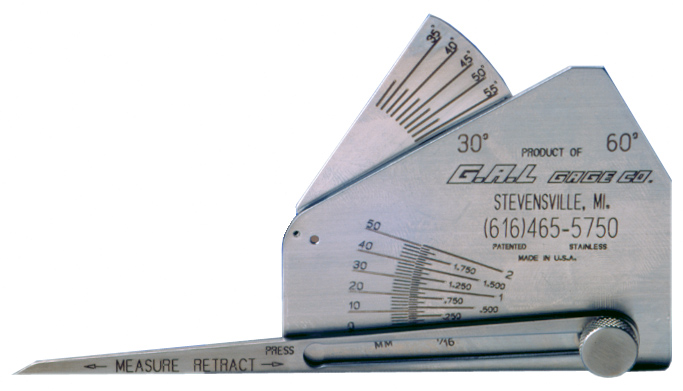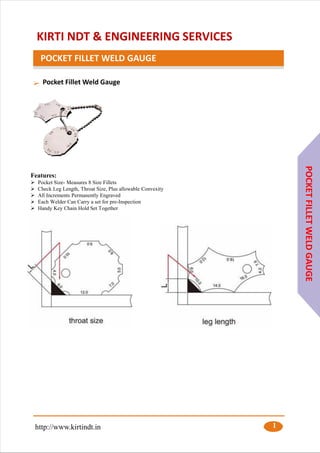The Ultimate Overview to Fillet Weld Quality Assurance: Ensuring Toughness and Durability in Your Welded Joints
In the realm of welding, guaranteeing the toughness and resilience of fillet welds is paramount for the integrity of welded joints. The quality assurance steps carried out during the welding procedure can significantly affect the structural sturdiness of the end product. From the option of proper materials to the precise assessment of welds, each step plays a critical duty in establishing the general quality of the weld joint. As we embark on this expedition of fillet weld top quality control, we will certainly reveal necessary elements that influence weld stamina, look into efficient evaluation techniques, and review techniques for stopping typical weld problems. Stay tuned to uncover how grasping these strategies can raise the sturdiness and integrity of your bonded joints.
Importance of Fillet Weld Quality Assurance
Guaranteeing appropriate fillet weld quality control is extremely important in assuring the architectural honesty and longevity of bonded components in numerous sectors. Fillet welds are typically utilized in structural steelwork, bridges, stress vessels, pipes, and other essential framework where the stamina of the weld is essential to total safety and performance. Quality assurance steps such as aesthetic evaluations, non-destructive testing, and adherence to welding procedures help determine potential defects like lack of combination, insufficient penetration, damaging, or excessive reinforcement.
Secret Elements Influencing Weld Stamina
Attaining ideal weld strength needs cautious consideration of different essential elements that affect the integrity and longevity of the welded joint. The very first important variable is proper joint preparation, which entails cleaning up the base metals to eliminate any type of pollutants that could deteriorate the weld. Additionally, the fit-up of the joint is important to guarantee appropriate infiltration and combination of the filler product.
The selection of the appropriate welding method and specifications also plays a substantial duty in figuring out weld toughness. Factors such as heat input, traveling rate, and electrode angle can influence the quality of the weld. Preserving the appropriate interpass temperature during multi-pass welding is crucial to stop splitting and guarantee a solid bond between the layers.
Moreover, the selection of filler material and its compatibility with the base metals is critical for attaining high weld strength. Using filler material with the suitable mechanical residential or commercial properties can improve the general honesty of the weld. Finally, post-weld warmth therapy and proper examination methods are important action in making sure the stamina and sturdiness of the welded joint.
Evaluation Methods for Weld Honesty

An additional vital assessment technique is liquid penetrant screening, where a liquid dye is related to the weld surface - Gauge Fillet Weld. The dye seeps right into any kind of surface-breaking defects, making them visible under UV light. This approach is reliable for discovering problems that may not show up to the nude eye


Ultrasonic testing is likewise extensively made use of for checking weld honesty. High-frequency acoustic wave are directed into the weld, and any type of disruptions in the acoustic wave pattern indicate prospective defects like fractures or absence of combination.
These evaluation techniques play an important duty in guaranteeing the top quality and integrity of welds, eventually contributing to the total strength and resilience of bonded joints in commercial settings.
Preventing Common Weld Issues
In order to maintain the architectural integrity of bonded joints in commercial applications, it is essential to carry out safety nets to address common weld problems. One common flaw is absence of blend, where the filler material falls short to bond effectively with the base metals, bring about weak areas in the weld. This can be prevented by making sure appropriate warm control and making use of the right welding technique.
One more constant issue is porosity, brought on by gas entrapment in the weld metal during the welding process. To avoid this, it is vital to cleanse the base metals extensively, utilize completely dry electrodes, and maintain a suitable welding atmosphere with correct air flow.
In addition, splits in welds can compromise the joint's strength. To avoid this defect, it is important link necessary to control the air conditioning rate after welding, use preheating when necessary, and choose proper welding criteria.
Enhancing Weld Sturdiness With Proper Strategies
One vital technique to enhance weld longevity is to guarantee appropriate weld bead positioning. By positioning the weld bead properly within the joint, the weld's stamina and resistance to fatigue can be significantly enhanced.
Furthermore, utilizing ideal pre-weld and post-weld heat therapies can aid minimize recurring stresses and improve the weld's strength, making it a lot more immune to breaking and failing over time. Another technique to improve weld longevity is to make use of top notch welding consumables and base materials. Choosing the appropriate filler metal and making certain the cleanliness of the base steels can protect against inclusions and various other flaws that might compromise the weld's toughness. By executing these appropriate strategies, welders can make sure that their welded joints show phenomenal strength and durability, fulfilling the best quality standards.
Conclusion
Finally, preserving excellent quality control requirements for fillet welds is critical for making certain the strength and longevity of welded joints. By recognizing the key variables impacting weld toughness, making use of inspection methods for weld stability, stopping common weld issues, and using proper techniques, welders can enhance the general durability of their welds. It is essential to prioritize top quality control steps to produce long-lasting and dependable bonded joints.
In the world of welding, guaranteeing the stamina and sturdiness of fillet welds is paramount for the integrity of bonded joints. As we begin on this expedition of fillet weld top quality control, we will certainly reveal important aspects that affect weld stamina, dive right into efficient inspection techniques, and review strategies for protecting against usual weld issues.Attaining optimal weld strength needs cautious factor to consider of numerous crucial factors that that site affect the stability and toughness of the bonded joint (Gauge Fillet Weld).In conclusion, preserving high quality control requirements for fillet welds is essential for making certain the toughness and longevity of welded joints. By comprehending the essential factors affecting weld toughness, utilizing inspection methods for weld stability, avoiding usual weld defects, and employing appropriate methods, welders can enhance the general durability of their welds